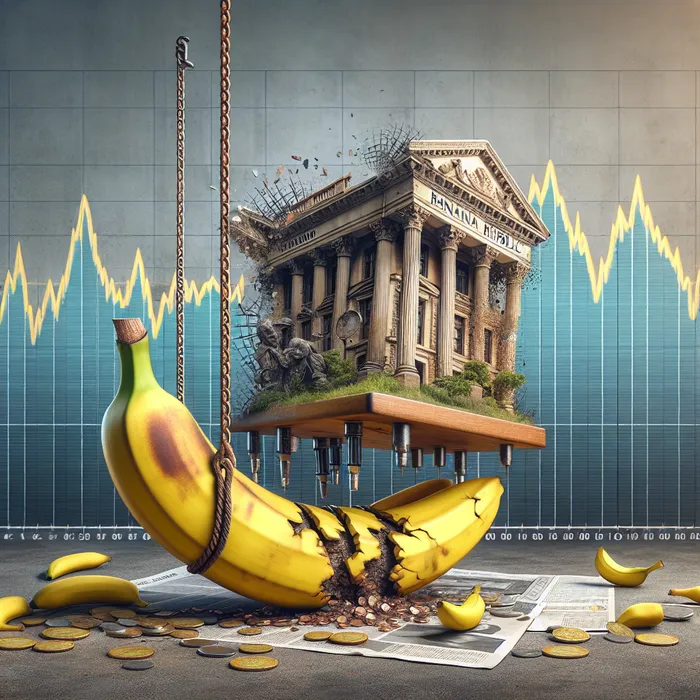How US tariffs are impacting the rand and raising 'banana republic' concerns

The rand is set to remain vulnerable to swings in the US dollar, with America now a "banana republic".
Image: Ron | IOL
The rand is set to remain vulnerable to swings in the US dollar, as political and economic uncertainty in the world’s largest economy prompts warnings that it is behaving like a “banana republic”.
Old Mutual chief economist Johann Els said US consumers were absorbing most of the price increases caused by tariffs imposed under US President Donald Trump, with exporters and importers also taking smaller hits. While the impact is likely to be felt over time and US consumers starting to push back against higher prices, he cautioned that it will not be quickly reversed.
“It’s not as if they’re going to stop Trump or that Trump is going to reverse it immediately. It’s probably down the line in the future that future administrations will reverse some of these tariffs… To some extent, Trump has already fired the US Department of Labor Statistics director because he doesn’t trust the numbers… Banana Republic stuff,” Els said.
Els noted that US consumer price index and import price index data due this week will be key indicators of the tariff impact. Early signs show tariffs are boosting US customs revenues, with consumers ultimately paying more for goods such as cars, washing machines and fridges. He expects globalisation to strengthen in the years ahead, driven by free trade outside the US, as well as by technology, AI, tourism and travel.
Investec chief economist Annabel Bishop said the rand’s movements would continue to be driven largely by the US dollar, with the currency showing less change against the pound and more weakness against the euro. She said that US trade and foreign policy could shift again if tariffs weigh heavily on growth and inflation, but for now, markets are waiting for August data before making big moves.
“US gross domestic product (GDP) is expected to slow in the third quarter as the full effects of protectionism take hold,” Bishop said. She added that earlier this year, US importers front-loaded purchases in anticipation of higher tariffs, boosting first-quarter inventories but weighing on GDP. In the second quarter, the opposite occurred, with an inventory drawdown and a boost to growth, although the more significant protectionist impact has been delayed until the third quarter.
Maarten Ackerman, chief economist at Citadel, said Trump’s “unpredictable leadership style has caused domestic and global consternation and sent markets into a tailspin”.
The South African government is acting to cushion the domestic economy from the fallout of US tariffs, which it says were unfairly applied. Trade, Industry, and Competition Minister Parks Tau and Agriculture Minister John Steenhuisen on Tuesday outlined measures to sustain exports and diversify markets.
The plan includes intensified engagement with the US, adjustments to local tariffs, and a push into alternative markets in Asia, the Middle East and India. Steenhuisen said it was important not to put all of South Africa’s “eggs in one basket”, while protecting the country’s position as the most industrialised and largest economy on the continent.
“I don’t think that it would be fair to penalise South Africa for being part of a regional block like BRICS, which obviously is our prerogative as a country,” he said of potential higher tariffs. “Some of them have obviously been slapped with far more punitive tariffs than we have.”
Ackerman argued that South Africa cannot afford complacency. “President Trump may be volatile, but he’s not South Africa's biggest problem,” he said. “We’re facing deep-seated structural challenges that require urgent reform, particularly around investment attractiveness.”
IOL
Related Topics: